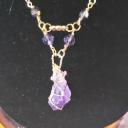Yahoo Answers is shutting down on May 4th, 2021 (Eastern Time) and beginning April 20th, 2021 (Eastern Time) the Yahoo Answers website will be in read-only mode. There will be no changes to other Yahoo properties or services, or your Yahoo account. You can find more information about the Yahoo Answers shutdown and how to download your data on this help page.
Trending News
know any good perm. dye's better than rite?
I have a wool ligned black shirt like a quilted flannel and it turned gray. Rite dye did not do much in bringing back the color. Anyone out there ever try dying fabric with hair dye or does anyone know any fabric dye that is better than rite?
3 Answers
- Linda SLv 71 decade agoFavorite Answer
Are you certain the shirt's outer fabric is wool? Only natural fibers can be home dyed. You can never ever dye polyester at home, the colour is added before it's a fiber; it added when it's a chemical goo or by caustic high heat chemicals.
If it is all wool, then it's not the dye, it's the method. Wool is protein and protein fibers need an acid bath for the dye to take. The best acid for dyeing wool is cheap, easy to find and non toxic: acetic acid, also known as vinegar. You must use very hot water and a half cup of vinegar for every eight ounces dry weight of fabric. Some people recommend simmering wool on low heat to allow the acid to "open up" the fibers so they react with the dye.
Be sure your item is clean and free of detergents, fabric softeners, etc. Pre wet the item before immersing in the dye. Make sure the item has room to move in the dye-bath. Also use twice as much black dye as the other dye colours. Use very hot water, dissolve the powder or mix the liquid with very hot water, then add the vinegar then add the item. Leave the item in for several hour and stir gently. Rinse out excess dye.
Don't use hair dye, the peroxide developer could weaken the fibers too much and the oxidizing action could make the wool turn strange colours. Hair dyes are not reactive dyes and they are not permanent when used on fabric.
http://www.alleycatscratch.com/lotr/Fabric/FabricD...
http://www.dharmatrading.com/info/dyeing_wool.html
http://www.ritdye.com/Achieving+True+Color.11.lass... and add the vinegar at step 8 instead of salt.
- Anonymous1 decade ago
All I can say is that dying a wool shirt with hair dye sounds quite brilliant! Wool IS actually hair. It might change the texture of the fabric a bit, but if nothing else works I'd give it a go!
I've used both Rit and other brands of dye, and really they're all about the same... You'll notice that all dyes you can buy have the same instructions and the same types of fabric that they work on. There are a SLIGHTLY different set of fabric dyes available at fabric stores called cold dyes, the ones I find are made by Dylon, but I think the point of those is to dye fabric that can't be heated... In any case, they do work a bit differently, so if you try one of those there's some chance it will work better.
Incidentally, if it's the flannel and not the wool that's turned gray, you might be out of luck, since flannel is often made of polyester and polyester is pretty much plastic... does not absorb dye! I've tried dying polyester many times and it NEVER ever works no matter what I do... :( At best it absorbs a tiny bit of dye, but barely any. Maybe try dying it a few more times to see if the effect is cumulative, if you have the patience. This would explain why the Rit isn't working though, Rit is supposed to work on wool.
I'd seriously try the hair dye though, it's an interesting idea... but try testing it on a small spot first in case it like melts the fabric or something! You should use semi-permanent though because it has a lower peroxide content, or mix up a professional dye with 10vol peroxide (rather than the usual 20/30vol). High peroxide content in hair dye is the most likely reason a hair dye would ruin a piece of clothing.






